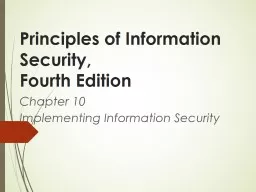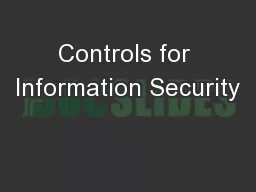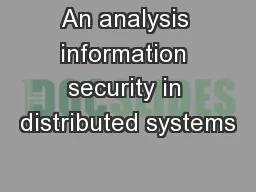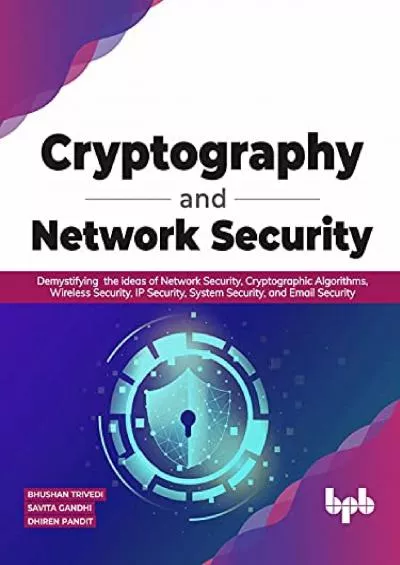PPT-Principles of Information Security,
Author : tatyana-admore | Published Date : 2016-05-10
Fourth Edition Chapter 10 Implementing Information Security Introduction SecSDLC implementation phase is accomplished through changing configuration and operation
Presentation Embed Code
Download Presentation
Download Presentation The PPT/PDF document "Principles of Information Security," is the property of its rightful owner. Permission is granted to download and print the materials on this website for personal, non-commercial use only, and to display it on your personal computer provided you do not modify the materials and that you retain all copyright notices contained in the materials. By downloading content from our website, you accept the terms of this agreement.
Principles of Information Security,: Transcript
Download Rules Of Document
"Principles of Information Security,"The content belongs to its owner. You may download and print it for personal use, without modification, and keep all copyright notices. By downloading, you agree to these terms.
Related Documents














